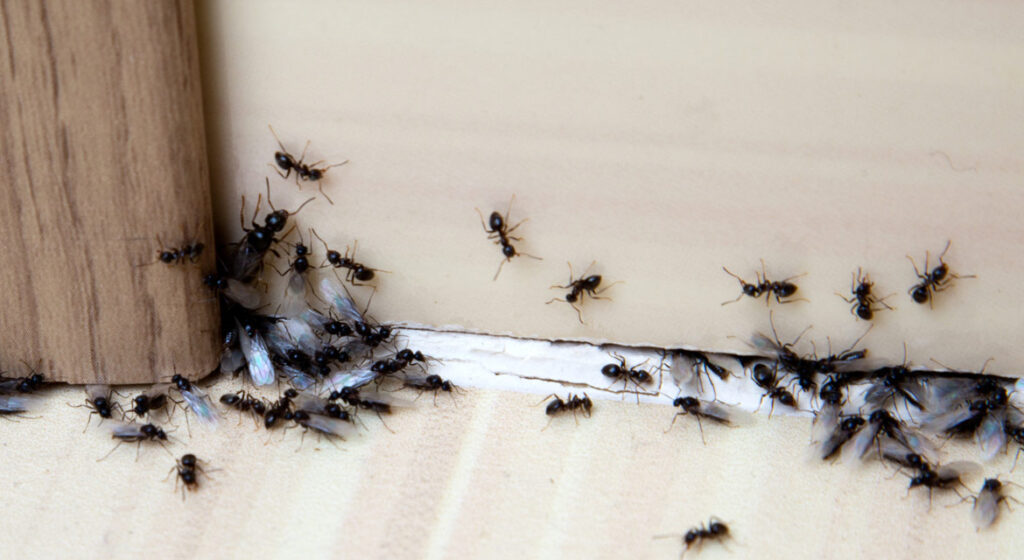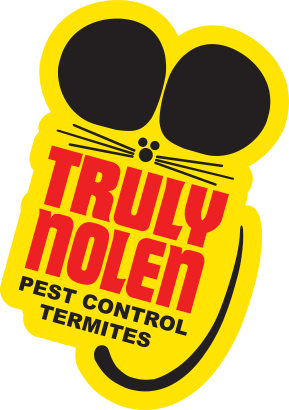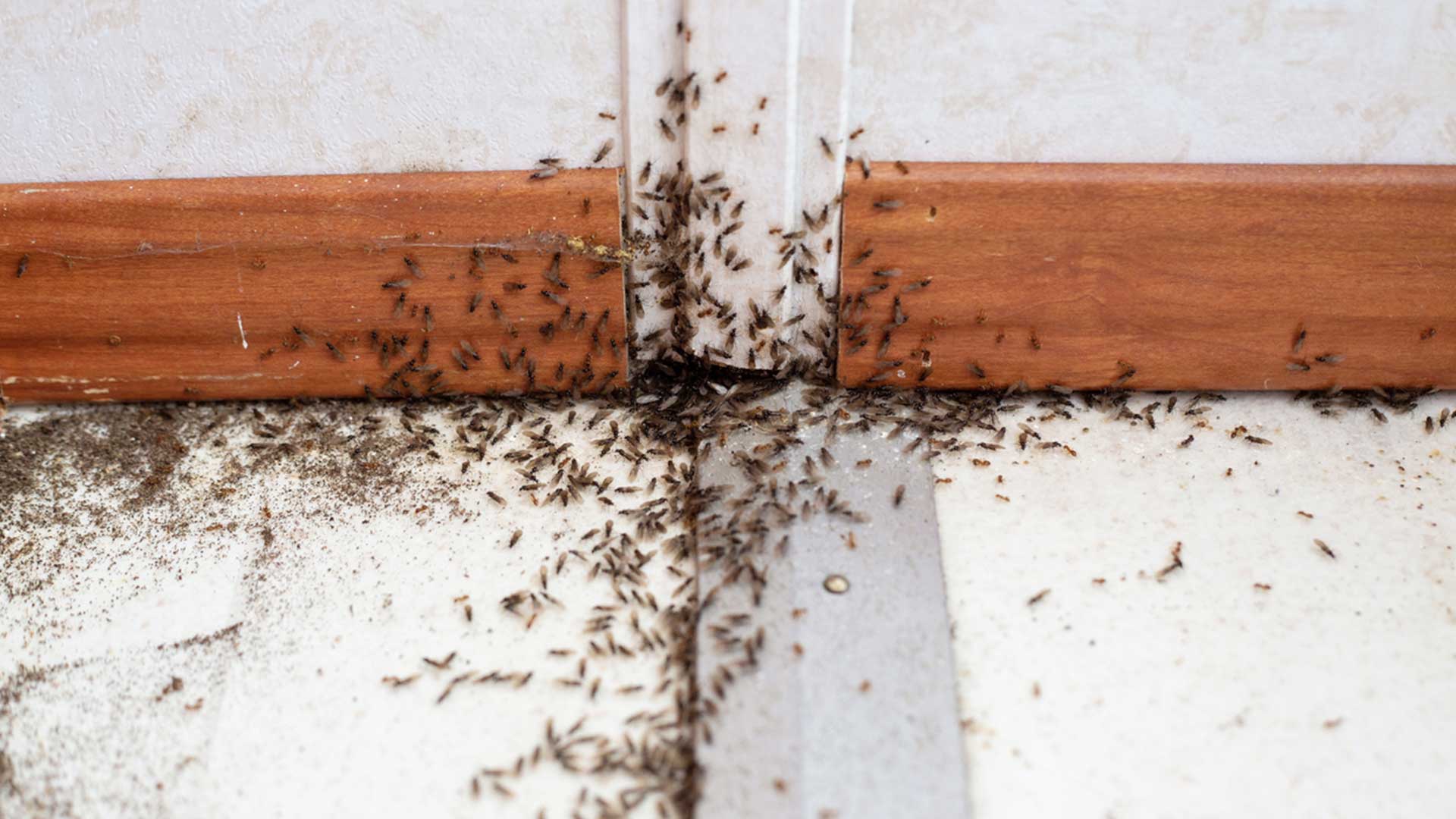
What are the Signs of an Ant Infestation?
Ant infestations are common pest problems that homeowners face. An infestation typically progresses through several stages, depending on factors such as ant species and environmental conditions. These three key points will help with understanding the general signs of an ant infestation:
- The presence of live ants, particularly in large numbers or forming trails, is a clear sign of an ant infestation.
- Visible ant nests, often seen as soil mounds or cracks in pavement, can indicate the presence of an ant infestation.
- Piles of debris, known as frass, created by certain ant species near their nesting areas, can serve as a sign of an ant infestation.
Early Stage Ant Infestation
In the early stage of an ant infestation, you may notice the occasional ant foraging inside your home or around the perimeter. These ants are often scouts searching for food sources and leaving chemical trails to guide other ants to the resources they find.
Other signs of an early-stage infestation include:
- Random ant sightings: You might see a few individual ants moving around, primarily in kitchens, near food sources, or along walls and windows.
- Ant trails: You may notice ants moving in a line, following specific routes as they explore your home.
- Small ant nests: Some species, such as pavement ants, may establish small satellite nests in wall voids, cracks, or crevices.
To prevent a full-scale infestation, you must take action during the early stage. Promptly remove any food or water sources that attract ants, seal entry points, and consider using ant baits or non-toxic repellents to deter them.
Mid-Stage Ant Infestation
If an early-stage ant infestation is left unaddressed, it may progress to the mid-stage. At this point, the ant activity becomes more noticeable and widespread. The ants may also become harder to eradicate.
Signs of a mid-stage infestation include:
- Increased ant presence: You will notice more ants foraging indoors and outdoors, with visible trails and an increased frequency of ant sightings.
- Nest expansion: Ant colonies may expand their nesting areas and create more satellite nests within your home, including in wall voids, under floors, or in attic spaces.
- Multiple entry points: You may observe ants entering through multiple openings, such as cracks, gaps in windows or doors, or utility lines.
- Persistent ants: Despite your efforts to eliminate them, the ants will likely continue finding food sources and may become immune to simple control measures.
During the mid-stage, you must employ more targeted ant control methods, such as using ant baits and applying residual insecticides around entry points. Professional pest control services may be necessary if the infestation becomes too challenging to manage independently.

Truly Nolen GUARANTEE
If you’re not completely satisfied, you’ll get a full refund on your most recent service with our 100% money back guarantee.

$50 Off Year Round Pest Control
Truly Nolen is a family-owned company with 85 years of experience providing the best pest control. If you’re not completely satisfied, you’ll get a full refund on your most recent service with our 100% money back guarantee.
Major Infestation
If an ant infestation remains unchecked and untreated for a long period, it can escalate into a major infestation. A high level of ant activity characterizes this stage, including the widespread presence of ants and potential structural damage.
Signs of a major infestation include:
- Large ant populations: A large number of ants will be present indoors and outdoors, with numerous foraging trails.
- Damage to structures: Certain ant species, such as carpenter ants, can cause structural damage by excavating wood to build their nests. They may be causing damage to your home if you notice wood shavings, weakened wooden structures, or hollow-sounding wood.
- Multiple nests: Ant colonies may have established multiple large nests in your home and on your property, making it difficult to eradicate the infestation.
- Presence of winged ants: Winged ants, also known as swarmers, are reproductive ants that emerge from their nests in search of a mate. You may have a major infestation if you notice many swarmers in or around your home.
- Health and hygiene concerns: Major ant infestations can lead to food contamination, health risks, and an overall decline in your living conditions.
Managing a major ant infestation often requires professional assistance. Pest control experts will employ comprehensive methods, such as targeted treatments, locating and eliminating nests, and implementing long-term prevention strategies, to control the infestation effectively.
Major Infestations: Prevention Tips
You must address ant infestations as early as possible to prevent them from escalating from the early stage to the severe stage. If you notice a single ant in your home, that could be a sign of an ant infestation to come. Therefore, you should take even the earliest signs of an ant infestation seriously.
The best way to solve a major ant infestation is to prevent it. You can employ several prevention techniques to minimize the risk of ant infestations and their progression. We describe the most effective tips in the next section.
Prevention Tips
Here are a few of the best ways to keep ants out of your home and offer your property.
- Keep a clean home: Ants are attracted to food sources, particularly sweet and sticky foods. Be sure to immediately clean up spills and crumbs and store food in airtight containers.
- Seal entry points: Ants can enter through the smallest cracks and gaps in your home’s exterior. Seal any openings, including windows, doors, and cracks in walls, to prevent ant entry.
- Maintain landscaping: Ants can use trees and shrubs as a bridge to access your home. Keep branches and vegetation trimmed away from your home’s exterior.
- Remove standing water: Puddles of water can attract ants, especially during warm weather. Drain any standing water around your property, including gutters and bird baths.
- Professional inspection and treatment: Regular inspections and treatments by a professional exterminator can help prevent and detect minor infestations before they become major problems.

$50 Off Year Round Pest Control
Truly Nolen is a family-owned company with 85 years of experience providing the best pest control. If you’re not completely satisfied, you’ll get a full refund on your most recent service with our 100% money back guarantee.
Food Contamination & Food Sources for Ants
Ants are notorious for their love of food and their ability to find it anywhere. All types of food, from sugary treats to meats and other proteins, are attractive to ants. Thus, once ants enter your home, they are bombarded with a plethora of food sources.
Unfortunately, ants’ predisposition to enjoy all food can lead to contamination and health risks for humans. If they come into contact with food meant for human or pet consumption, they can contaminate it with bacteria and other harmful pathogens. Additionally, ants can cause structural damage to homes by nesting in crawl spaces and eating away at plant roots.
One of the best ways to prevent a major ant infestation is to remove all ant food sources. Understanding the types of foods that attract ants is essential for this prevention strategy to be effective.
Human Food Sources Attractive to Ants
Ants are known for their keen sense of smell, which allows them to detect even the tiniest traces of food. Unfortunately, most human food attracts ants, increasing their chance of finding something interesting in your home.
The following food sources are an ant’s favorite.
- Sugary treats: Sweet foods, such as cookies and candy, are a major food source for ants. The ant can detect the sweet scent released from these items from far distances.
- Protein-rich foods: Foods with lots of protein, such as meats and cheeses, are also a target for ants. These foods can offer an excellent source of nutrition for an ant colony, so they will attract ants if not properly stored and sealed.
- Whole fruits and vegetables: Ants can easily detect fruits and vegetables’ sweet and fragrant aromas, making them a prime target for contamination.
Pet Food Sources Attractive to Ants
Pet food is a common target for ants because it contains protein and other essential nutrients for survival. Below we have listed the most common ways pet foods attract ants.
- Dry pet food: Dry pet food is one of the most common pet foods attracting ants, as it is very aromatic. Ants can easily crawl into the food and contaminate it, making it unsuitable for your pet.
- Wet pet food: Wet pet food is also attractive to ants because of its high moisture content. Ants often crawl into open cans of wet pet food and contaminate them.
- Pet food bowls: Bowls left out all day are a prime target for ants. Ants can easily crawl into pet food bowls and contaminate the food. Since ants are attracted to even the smallest crumb, it does not take much pet food left in the bowl to appeal to them.
In addition to being a nuisance, ants can pose a health risk to your pet. They can contaminate pet food with harmful bacteria and other pathogens, which can lead to food poisoning and other illnesses. To prevent ant infestations in your home and to keep your pet safe, it is important to take proactive measures such as storing pet food in airtight containers, refrigerating wet pet food, and cleaning pet food bowls regularly.
Prevention Tips
While ants can be beneficial insects in their natural habitat, they can cause significant issues when they invade homes and contaminate food. You can keep your home ant- and health risk-free by taking proactive measures and seeking professional pest control services.
To prevent ants from finding food in your home, you must take proactive measures, including the following.
- Keep all food tightly sealed and stored properly.
- Wipe up all crumbs and spills.
- Inspect your home for signs of ant activity, such as ant mounds or trails.
- Store pet food in airtight containers.
- Clean pet food bowls regularly.
By following these simple steps, you can protect yourself and your pets from the harmful effects of ant infestations and ensure your food remains safe and fresh.
Conclusion
Ant infestations of any size can be a nuisance for homeowners. However, major infestations are often a costly and frustrating problem. By being aware of the warning signs and taking preventative measures, you can keep your home ant-free and avoid structural damage or health hazards. If you suspect an ant infestation, contact a professional exterminator to address the problem immediately.

$50 Off Year Round Pest Control
Truly Nolen is a family-owned company with 85 years of experience providing the best pest control. If you’re not completely satisfied, you’ll get a full refund on your most recent service with our 100% money back guarantee.
Frequently Asked Questions
Why are ants coming into my house?
Ants are typically attracted to food sources, water, or potential nesting sites. Keeping your home clean, sealing entry points, and removing food and water sources can help deter ants from entering. Learn More!
Are ants harmful to my health?
While most ants are not directly harmful to human health, some can bite or sting, causing discomfort and potential allergic reactions. Additionally, ants can contaminate food and surfaces, leading to foodborne illnesses. Learn More!
What are the signs of an ant infestation?
Signs of an ant infestation can include seeing ants trailing along surfaces, finding ant nests (which vary by species), discovering piles of discarded wings (often seen after mating flights), or noticing signs of damage to wood or other materials. Learn More!
Can ants cause structural damage to my house?
Certain ant species, like carpenter ants, can cause structural damage by tunneling through wood. While not as destructive as termites, carpenter ants can weaken wooden structures if left unchecked. Learn More!
When should I call a professional pest control company for ant control?
It’s recommended that you contact a professional if you have a severe or recurring ant infestation, if the infestation is causing significant damage, or if DIY methods have been unsuccessful. Truly Nolen professionals have the expertise and resources to effectively address ant infestations and provide long-term solutions. Learn More!

